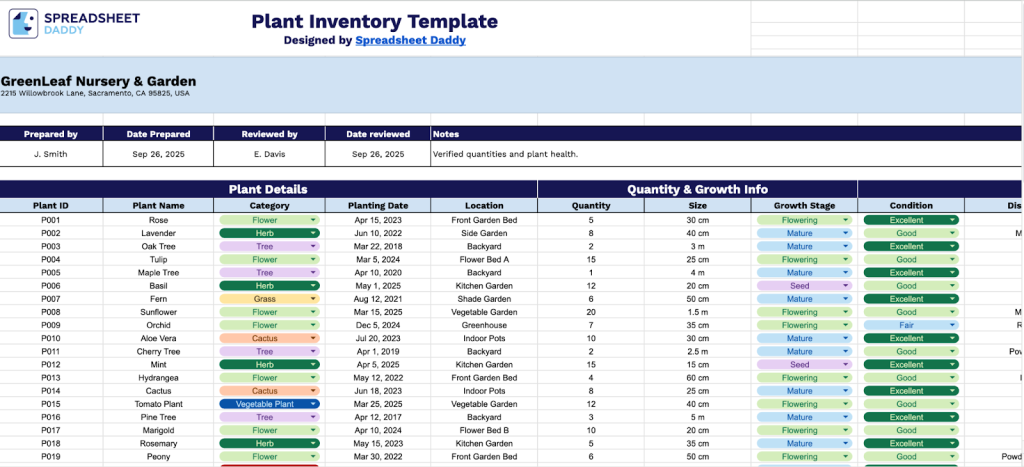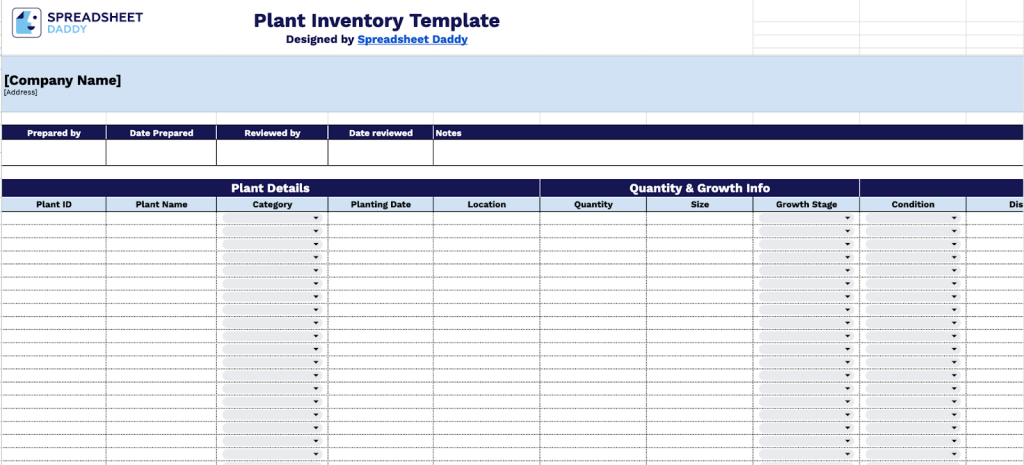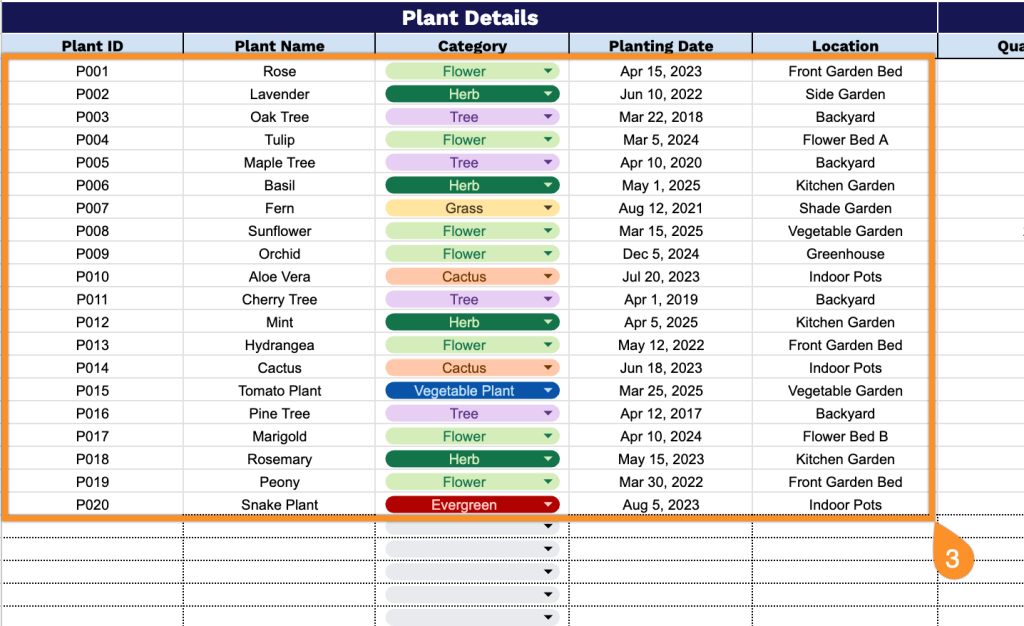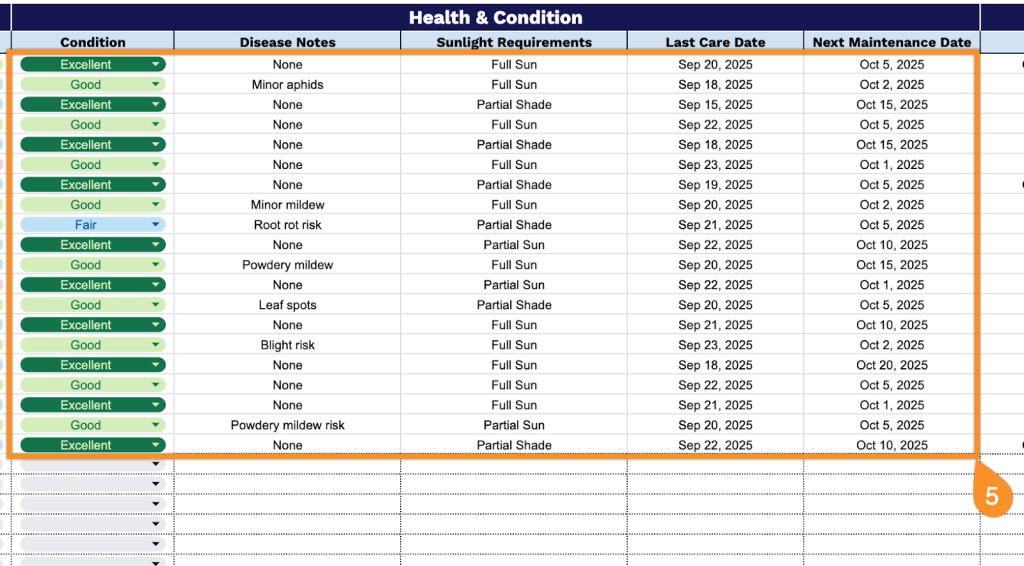Plants don’t come with instruction manuals, but your inventory system should make life simpler. Whether you’re a commercial grower juggling hundreds of species or a plant enthusiast whose “just one more” habit has gotten delightfully out of hand, tracking everything in your head stops working eventually.
That’s where a solid plant inventory spreadsheet comes in. Beyond just listing what you own, it becomes your growing companion: a place to log watering patterns, catch early signs of trouble, plan repotting schedules, and actually remember when you bought that mystery succulent in the corner.
We’ve built a flexible template that meets you where you are. Grab it as a Google Sheet for access from anywhere, download the Excel version for offline use, or print the PDF to keep next to your watering can. It scales with you, from a cozy apartment jungle to a full-scale operation spanning greenhouses.
Let’s explore how this free template can transform plant chaos into clarity.
Quick Jump
ToggleWhat Is a Plant Inventory Spreadsheet?

A plant inventory spreadsheet is a digital document used to track and organize information about plants in a specific location, such as a garden, greenhouse, nursery, or landscape.
This tool helps gardeners, landscapers, and plant enthusiasts maintain accurate records, plan maintenance schedules, and make informed decisions about their plant collections.
Download Spreadsheet Daddy’s Free Plant Inventory Management Spreadsheet

Our plant inventory template provides a simple way to organize and monitor all your plants in one place.
The template is fully customizable, allowing you to add or remove columns based on your requirements, making it suitable for hobbyist gardeners, commercial nurseries, or landscaping companies.
What’s included
- Comprehensive plant identification system: Each entry includes a unique Plant ID, plant name, and category classification to help you organize and track your entire plant collection systematically across different plant types and varieties.
- Location and timeline tracking: Document when each plant was added, including planting dates, current location information, and maintenance scheduling fields such as last care date and next maintenance date, to stay on top of your plant care routines.
- Growth and health monitoring: Track essential plant metrics, including quantity, size, growth stage, and current condition, with dedicated fields for disease notes and specific sunlight requirements to ensure your plants thrive in optimal conditions.
- Supplier and financial records: Maintain complete purchase history with supplier information and purchase price for each plant, making it easy to track your budget and manage supplier relationships without needing additional documentation systems.
- Flexible notes section: A dedicated notes column lets you record custom observations, special care instructions, seasonal changes, or any other crucial plant-specific information that doesn’t fit in the structured fields.
How to Use Our Plant Inventory Spreadsheet Template
1. You can work with our template by duplicating the Google Sheets version or exporting it to Excel or PDF.
2. Input your organization’s name, street location, and the person coordinating inventory with the date finalized. Document the manager’s name and the date of the inspection. Notes can hold extra details.

3. Complete the Plant Details section by entering all essential identification and location information:
- Plant ID: Enter the unique identifier assigned to track this specific plant in your inventory system.
- Plant Name: Record the common or botanical name of the plant species.
- Category: Specify the classification type (Tree, Shrub, Herbaceous Plant, Flower, Grass, etc.).
- Planting Date: Document when the plant was initially placed in the ground or potted.
- Location: Add the specific area or zone where the plant is situated (garden bed number, greenhouse section, yard quadrant, etc.).

4. Fill in the Quantity & Growth Info section by documenting all measurements and developmental stage details:
- Quantity: Enter the number of individual plants of this type in your inventory.
- Size: Record the current dimensions or measurements (e.g., height, width, pot size).
- Growth Stage: Specify the current developmental phase (Seed, Juvenile, Mature, Flowering, Fruiting, etc.).

5. Document the plant’s wellness in the Health & Condition section to ensure proper care monitoring:
- Condition: Assess and record the overall health status (Excellent, Good, Fair, Poor, Dead).
- Disease Notes: Provide detailed observations of any pests, diseases, or abnormalities affecting the plant.
- Sunlight Requirements: Specify the light requirements for optimal growth (e.g., full sun, partial shade, full shade, etc.).
- Last Care Date: Record when the plant most recently received maintenance attention.
- Next Maintenance Date: Schedule the upcoming date for watering, fertilizing, pruning, or other care activities.

6. Manage sourcing information in the Supplier & Purchase Info section for accurate cost tracking:
- Supplier: Enter the name of the nursery, vendor, or source where the plant was obtained.
- Purchase Price: Record the cost paid per plant or per batch for inventory valuation purposes.

7. Record other essential details in the Notes space provided.
